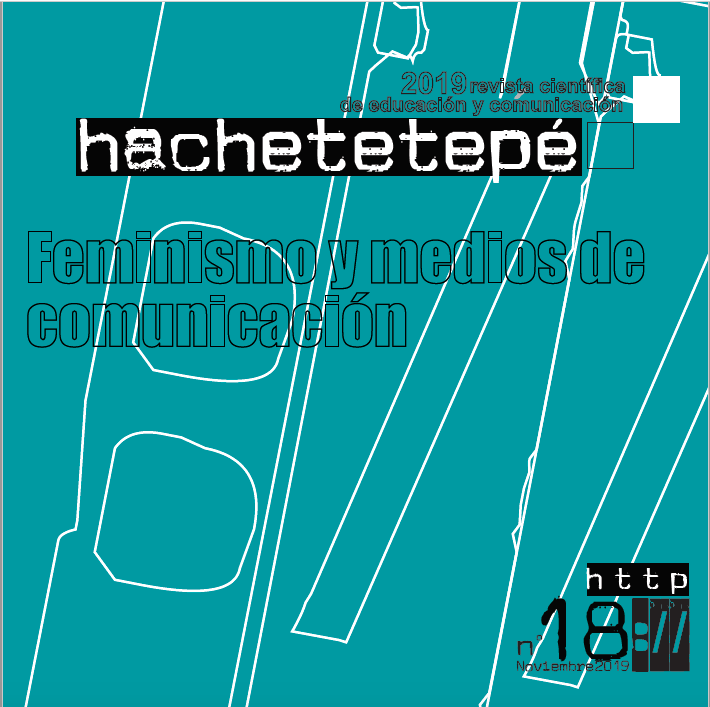Authorship, parresia and intersectionality in ciberculture: reflections on current training Felipe da Silva Ponte

Info
Abstract
The present cartographic research was carried out taking into account the cybercultural context, which is our contemporary culture mediated by digital networks and technologies, which establishes new ways of being and living, and is marked by post-massive and interactive communication processes. This research was conducted in the first semester of 2018 in the discipline "Aesthetic Education" of the Pedagogy course of the University of the State of Rio de Janeiro (UERJ / Maracanã Campus). For this research, we have proposed for students the collaborative production of an online publication by the Facebook Notes application based on ethical-aesthetic-political problematizations of themselves and with respect to the other. From this proposition emerged several publications that unfolded in multiple intersections (gender, sexuality, race, class) and experiments aimed at speaking the truth of themselves and ourselves within an ethical-aesthetic-political freedom that gave meaning to the parrhasiatic publications.
Keywords
Downloads
How to Cite
License

This work is licensed under a Creative Commons Attribution-NonCommercial-NoDerivatives 4.0 International License.
Those authors who have published with this journal, accept the following terms:
- They will retain their copyright and guarantee the journal the right to first publication of their work, which will simultaneously be subject to the Creative Commons Attribution License . They may be copied, used, disseminated, transmitted and publicly displayed, provided that the authorship, url, and magazine are cited, and are not used for commercial purposes. No derivative works are allowed.
- They may adopt other non-exclusive license agreements for the distribution of the published version of the work (e.g., deposit it in an institutional telematic archive or publish it in a monographic volume) provided that the initial publication in this journal is indicated.
- Disseminate your work through the Internet (e.g., in institutional telematic archives or on your website) once the manuscript is accepted, which may lead to interesting exchanges and increased citations of the published work. (See The effect of open access).
Hachetetepé. Scientific journal of education and communication does not charge a fee for the submission of manuscripts or for the publication of its articles.
References
Butler, J. (1999). Corpos que pesam: sobre os limites discursivos do “sexo”. En Guacira Lopes Louro (3° ed.) O corpo educado: pedagogias da sexualidade (151-172). Belo Horizonte: Autêntica.
Dorlin, E. (2009). Sexo, género y sexualidades: introducción a la teoría feminista. Ediciones Nueva Visión.
Flax, J. (1991) Pós-modernismo e as relações de gênero na teoria feminista. En H. Buarque
Hollanda (Ed.). Pós-modernismo e política (217-250). Rio de Janeiro: Rocco.
Foucault, M. (2013a). 3ª. Conferência: Parrhesia e a crise das instituições democráticas. Prometeus filosofia, 6(13).
Foucault, M. (2013b). 3ª. Conferência: o significado da palavra parrhesia? Prometeus filosofia, 6(13).
Foucault, M. (2006). Ética do cuidado de si como prática de liberdade. En M. Foucault. Ditos e escritos V (264-287). Rio de Janeiro: Forense editora.
Laponte, L. G. (2006). Docência artista: arte, gênero e ético-estética docente. Educação em Revista, (43); 35-55.
Lima, F. (2018). Raça, Interseccionalidade e Violência: corpos e processos de subjetivação em mulheres negras e lésbicas. Cadernos de Gênero e Diversidade, 4(2); 66-82.
Maddalena, T. L. y Santos, E. (2017). # UERJRESISTE: narrativas digitais de formação em tempos de crise. Revista Observatório, 3(4); 92-115.
Pocahy, F. (2011). Interseccionalidade e educação: cartografias de uma prática-conceito feminista. TEXTURA-Revista de Educação e Letras, 13(23).
Rolnik, S. (1989). Cartografia Sentimental Transformações Contemporâneas Do Desejo. Porto Alegre: Sulina; Editora UFRGS.
Vigoya, M. V. (2016). La interseccionalidad: una aproximación situada a la dominación. Debate feminista, 52, 1-17.

